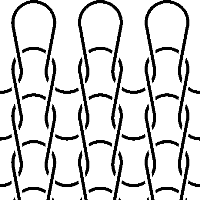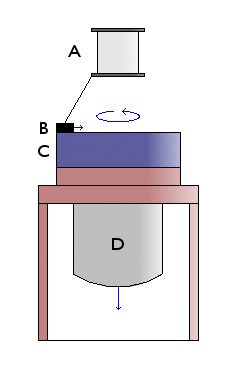| Wire Knitting | How we knit wire The basics |
How we knit wireKnitting wire mesh is based on principles similar to garment knitting, but is produced using specialised heavy-duty machinery.
The material has interlocking asymmetrical loops of wire which can move relative to one another, allowing sideways and lengthways stretch. Because each loop is bent like a small spring this also provide high resilience. Mesh can be used in its original flat form or further processed by layering, folding, coiling, stitching or compressing. A commonly used process is to crimp metal mesh by passing it through roller to produce a diagonal or herring-bone pattern. This gives the mesh additional depth, usually between 4mm and 8mm. Knitting machines
A: The spool or spools of material to be knit
Material strands are pulled from the feeder spools, channelled through the strand feeder, and knit by the needles held in the cylinder head. The knit material is then drawn through and stored for further processing. Changing the number of feeder spools, strand feeders and set-up, and size, arrangement and number of needles in the cylinder head enables various types of mesh to be knit. KnitMesh Technologies has a huge range of knitting machines, cylinder heads, and strand feeder set-ups which allows them to make knitted mesh to almost any customer specification. For more information on how KnitMesh can satisfy your knitted mesh requirements please contact our Customer Services team. |


 Initially formed as a cylinder, the knitted material is rolled to produce a lay flat sock which can vary in width from 6mm to 1000mm.
Initially formed as a cylinder, the knitted material is rolled to produce a lay flat sock which can vary in width from 6mm to 1000mm. Knitting machines have four main points of interest:
Knitting machines have four main points of interest: